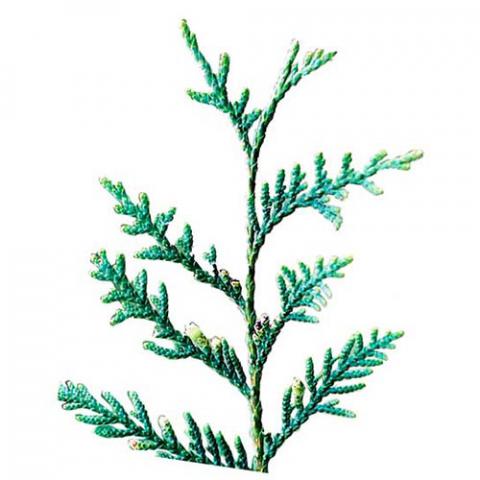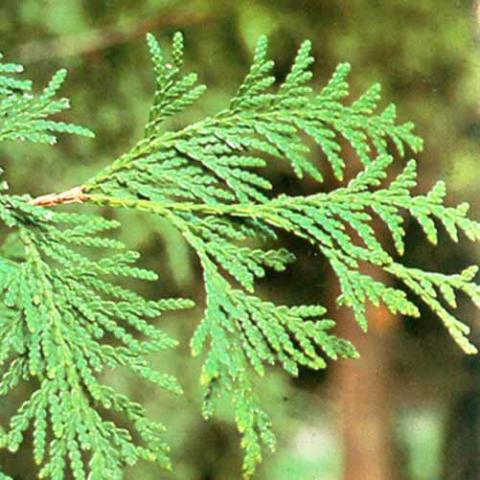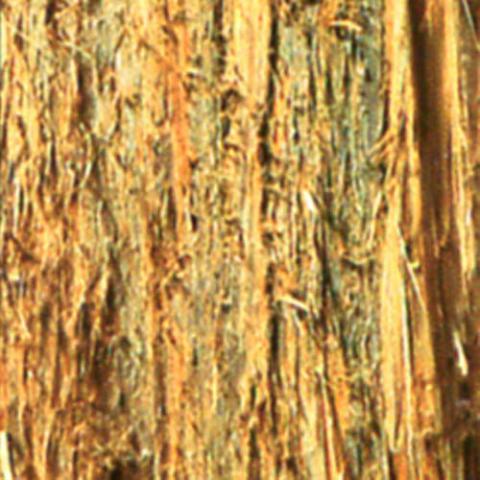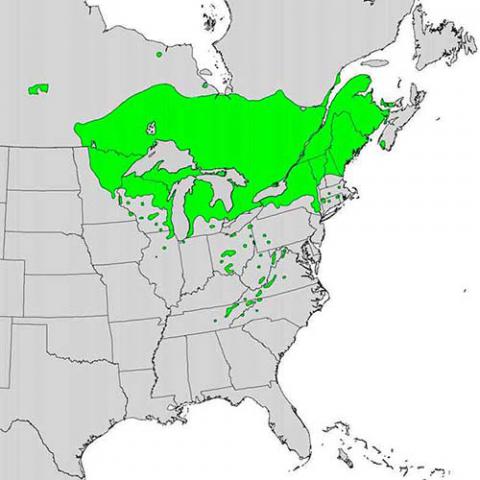NAME(S)
TAXONOMY
PLANTAE ID
THERAPEUTIC
Canada
Issued:
Stamp:
Thuja occidentalis
Canada
Issued:
Stamp:
Thuja occidentalis
Canada
Issued:
Stamp:
Thuja occidentalis
How the Arborvitae Got Its Name
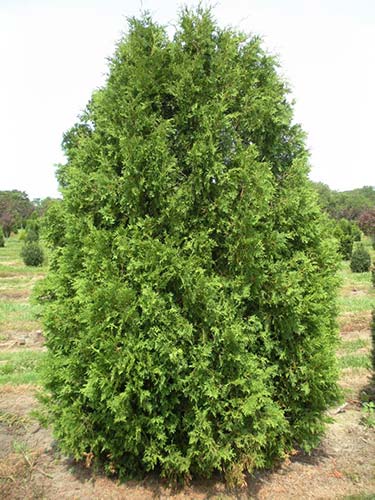
Scurvy is a very serious disease. We hear very little about it these days, but it was endemic among European sailors well into the 19th century. At the time, no one knew the origin of this disease, but it was associated with times of war and long sea voyages. The recommended treatment at the time? Prayer! Sadly, soldiers and sailors suffering from scurvy inevitably died despite the prayers. Today we know that scurvy is caused by a lack of vitamin C, found in many fruits and vegetables, but missing in food supplied to soldiers and sailors of the time. Their diet, mostly composed of biscuits, salted meat and fish, was totally lacking in fresh vegetables. At the time, of course, nothing was known about vitamins, but it was noticed that sailors often recovered from scurvy when they set foot on land and sick sailors would sometimes be dropped off on remote islands to recover. Some authorities even seemed aware that the recovery was fastest in summer and autumn, when fruits and vegetables were plentiful, and slower in winter and spring, when people lived mainly on bread and meat. Although the Spanish had discovered as early as 1497 that eating citrus fruit (rich in vitamin C) could cure the disease, they felt no compulsion to share that information with their enemies.
Jacques Cartier's Experience

Scurvy struck French explorer Jacques Cartier and his men on their second trip to Canada in 1535-1536. In fact, 25 of his crew of 110 men died of the disease and he himself suffered from it. At first he was unwilling to reveal the health status of his men to the local natives lest they take advantage of their weakness, but when situation worsened with the arrival of winter, he had no choice but to ask for their help. The Amerindians gave the sick men a herbal tea made from the leaves of a local conifer they called “annedda” or “aneda” (later it was determined to be Thuja occidentalis). The recovery was very fast: in just a few days, even men apparently dying began to recover fully. Cartier called this miraculous plant “arborvitae”, latin for “tree of life”, and promoted it highly on his return to France. In spite of his accolades, he never actually described the tree beyond stating it was an evergreen, leading to considerable confusion.
72 Years Later
France’s attempts to establish colonies in Canada failed repeatedly. However, when Samuel de Champlain arrived at Stadacona (now Quebec City) 72 years later with yet another attempt to found a colony (and this one would be successful), he was quick to ask the local tribes about annedda. He had studied Cartier’s writings and thought he could make it rich by harvesting this plant and exporting it to Europe. But much to his dismay, the local Amerindians had no knowledge of any plant bearing that name. Champlain complained they had lost all knowledge of medicine since the time of Cartier, but that was not the problem. Instead, he was talking to the wrong tribe. By 1608, the St. Lawrence Iroquoian tribe Cartier met had mysteriously disappeared. Champlain was instead dealing with the Hurons, who had taken their place, and annedda meant nothing to them. Champlain had to fall back on the fur trade to finance his expeditions and both the annedda and the arborvitae were essentially forgotten, only to be seen as footnotes in the annals of history.
Arborvitae and Cedar: Two Names for the Same Tree
By a curious coincidence, while the French forgot Cartier’s praise of the arborvitae and the name arborvitae never caught on in the French language, that wasn’t the case everywhere.
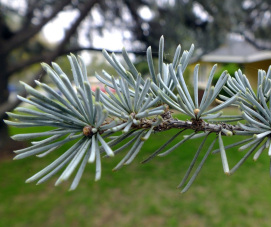
In England, the name arborvitae was readily adopted for this new conifer with flattened scales that was so different from any conifer known in Europe at that time. However, T. occidentalis also came to be commonly called “cedar” or “white cedar”, even though the true cedar (Cedrus atlantica) is a very different tree. How did that happen?
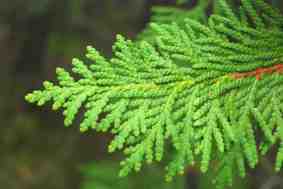
At the time, the true cedar (Cedrus) was not grown in England, so no one there knew what it looked like. The British were however familiar with the cedar boxes that were frequently imported from the Middle East. Since the wood of arborvitae (Thuja occidentalis) has a similar scent, color and texture to cedar wood, people began calling T. occidentalis cedar. The error was carried to Britain’s North American colonies and remains a source of confusion even to this day.
Reference: laidbackgardener.blog
Genus species (Plantae): Thuja occidentalis
Thuja occidentalis, also known as white cedar, is an evergreen coniferous tree, in the cypress family Cupressaceae, which is native to eastern Canada and much of the north, central and upper Northeastern United States, but widely cultivated as an ornamental plant. The species was first described by Carolus Linnaeus in 1753, and the binomial name remains current.
Common names
Common names include:
- northern white cedar
- eastern white cedar
- white cedar
- swamp cedar
- false white cedar
- northern whitecedar
- arborvitae
- American arborvitae
- eastern arborvitae
The name arborvitae is particularly used in the horticultural trade in the United States. It is Latin for "tree of life" - due to the supposed medicinal properties of the sap, bark and twigs. Despite its common names, it does not belong to the cedar genus, nor is it related to the Australian white cedar, Melia azedarach.
Description
Thuja occidentalis has fan-like branches and scaly leaves. Unlike the closely related species Thuja plicata, it is only a small tree, growing to a height of 10–20 meters (33–66 ft) tall with a 0.4 meters (1.3 ft) trunk diameter, exceptionally to 30 meters (98 ft) tall and 1.6 meters (5.2 ft) diameter. The tree is often stunted or prostrate. The bark is red-brown, furrowed and peels in narrow, longitudinal strips. The foliage forms in flat sprays with scale-like leaves 3–5 millimeters (0.12–0.20 in) long. The cones are slender, yellow-green ripening brown, 10–15 millimeters (0.39–0.59 in) long and 4–5 millimeters (0.16–0.20 in) broad, with 6-8 overlapping scales. The branches may take root if the tree falls.
Distribution
Northern white cedar is native to an area in the southern part of eastern Canada and the adjacent part of the northern United States. It extends from southeastern Manitoba east throughout the Great Lakes region and into Ontario, Québec, New York, Vermont, New Hampshire, Maine, Prince Edward Island, New Brunswick, and Nova Scotia. There are isolated populations in west-central Manitoba, and to the south in Massachusetts, Connecticut, Ohio, and Illinois and in the Appalachian Mountains of Kentucky, Tennessee, North Carolina, Pennsylvania, Maryland, Virginia, and West Virginia. In Canada, its range reaches the Arctic treeline and the southern tip of Hudson Bay. It grows mainly in places with cooler summers, with an average temperature of 16 to 22 °C (61 to 72 °F) in July, and a shorter growing season, from 90 to 180 days.
Ecology
Northern white cedar grows naturally in wet forests, being particularly abundant in coniferous swamps where other larger and faster-growing trees cannot compete successfully. It also occurs on other sites with reduced tree competition, such as cliffs. Although not currently listed as endangered, wild white cedar populations are threatened in many areas by high deer numbers; deer find the soft evergreen foliage a very attractive winter food and strip it rapidly. The largest known specimen is 34 m (112 ft) tall and 175 cm (69 in) diameter, on South Manitou Island within Leelanau County, Michigan. Northern white cedar can be a very long-lived tree in certain conditions, with notably old specimens growing on cliffs where they are inaccessible to deer and wildfire; the oldest known living specimen is just over 1,100 years old, but a dead specimen with over 1,650 growth rings has been found. Despite their age, these very old trees are small and stunted due to the difficult growing conditions. These individuals' long life spans have been attributed to their slow growth and their ability to survive when different sections of the tree are damaged or killed. The Witch Tree, a T. occidentalis growing out of a cliff face on Lake Superior in Minnesota, was described by the French explorer Sieur de la Verendrye as being a mature tree in 1731; it is still alive today.
Thuja occidentalis specimens found growing on cliff faces in southern Ontario are the oldest trees in Eastern North America and all of Canada, growing to ages in excess of 1,653 years.
Uses
Thuja occidentalis is a tree with important uses in traditional Ojibwe culture. Honored with the name Nookomis Giizhik ("Grandmother Cedar"), the tree is the subject of sacred legends and is considered a gift to humanity for its myriad uses, among them crafts, construction, and medicine. It is one of the four plants of the Ojibwe medicine wheel, associated with the north. The foliage is rich in Vitamin C and is believed to be the annedda which cured the scurvy of Jacques Cartier and his party in the winter of 1535–1536. Due to the presence of the neurotoxic compound thujone, internal use can be harmful if used for prolonged periods or while pregnant. It is commercially used for rustic fencing and posts, lumber, poles, shingles, and in the construction of log cabins. It is the preferred wood for the structural elements, such as ribs and planking, of birchbark canoes and the planking of wooden canoes.
The essential oil within the plant has been used for cleansers, disinfectants, hair preparations, insecticides, liniment, room sprays, and soft soaps. There are some reports that the Ojibwa made a soup from the inner bark of the soft twigs. Others have used the twigs to make teas to relieve constipation and headache.
Reference: Wikipedia


